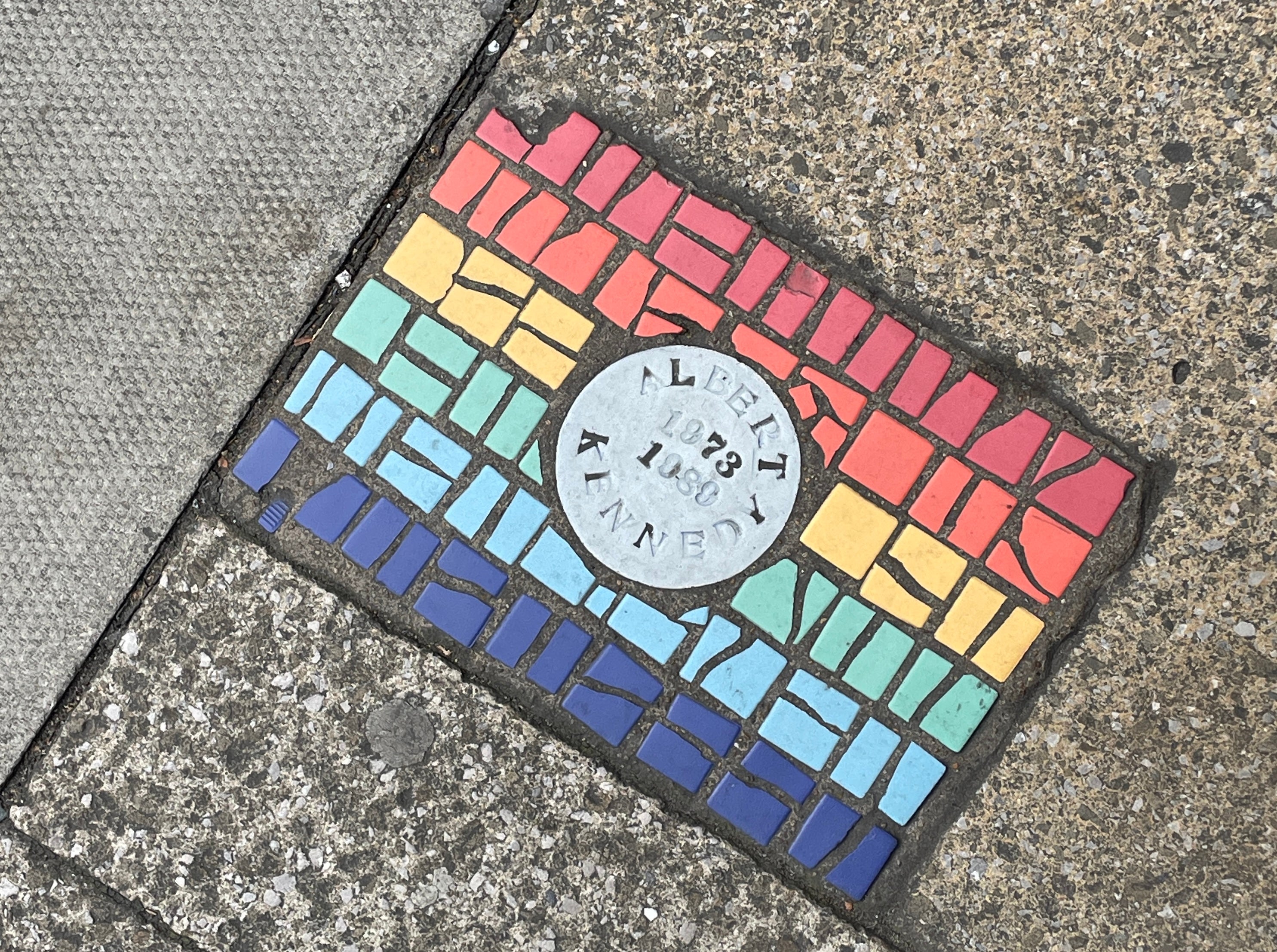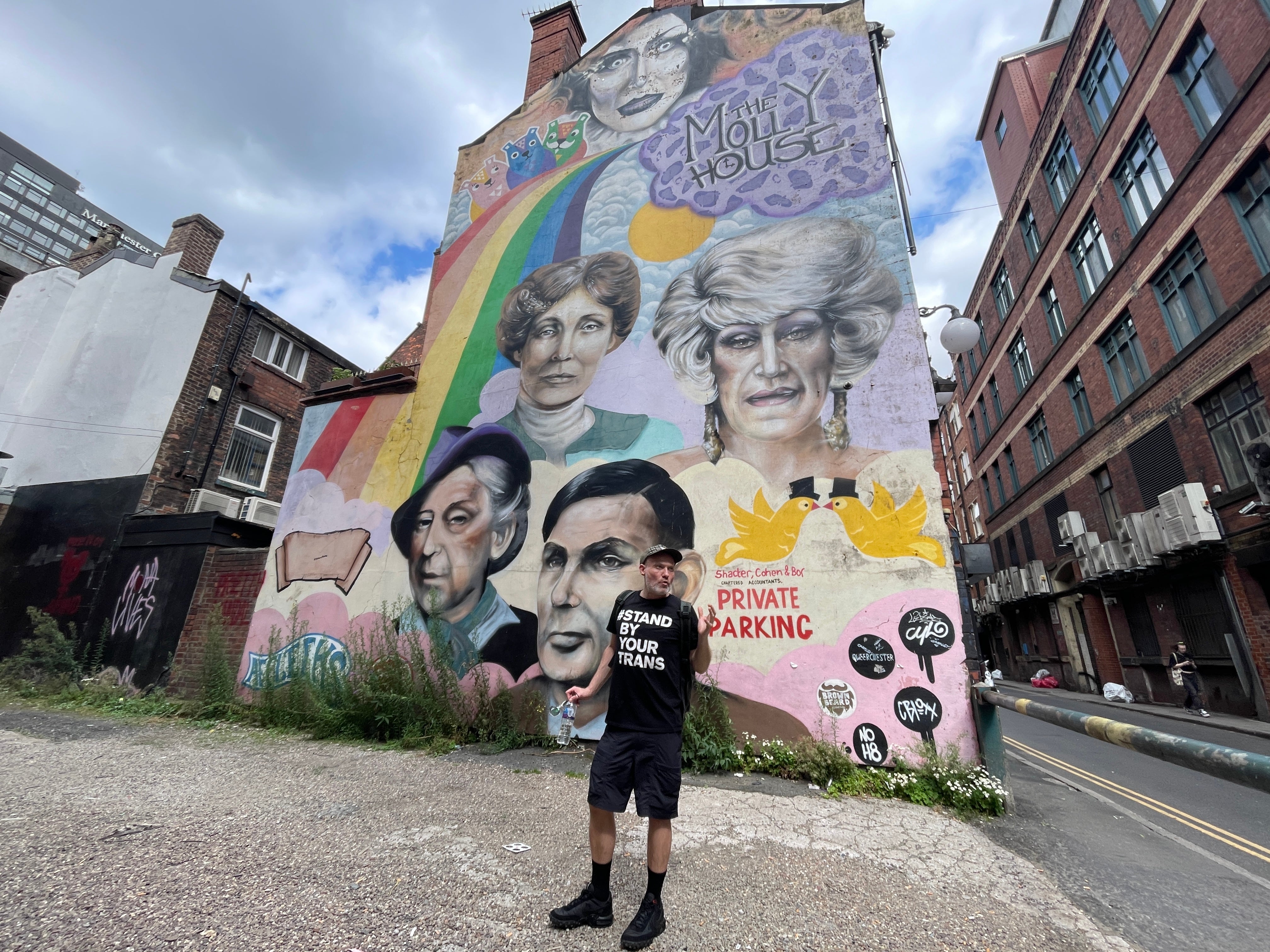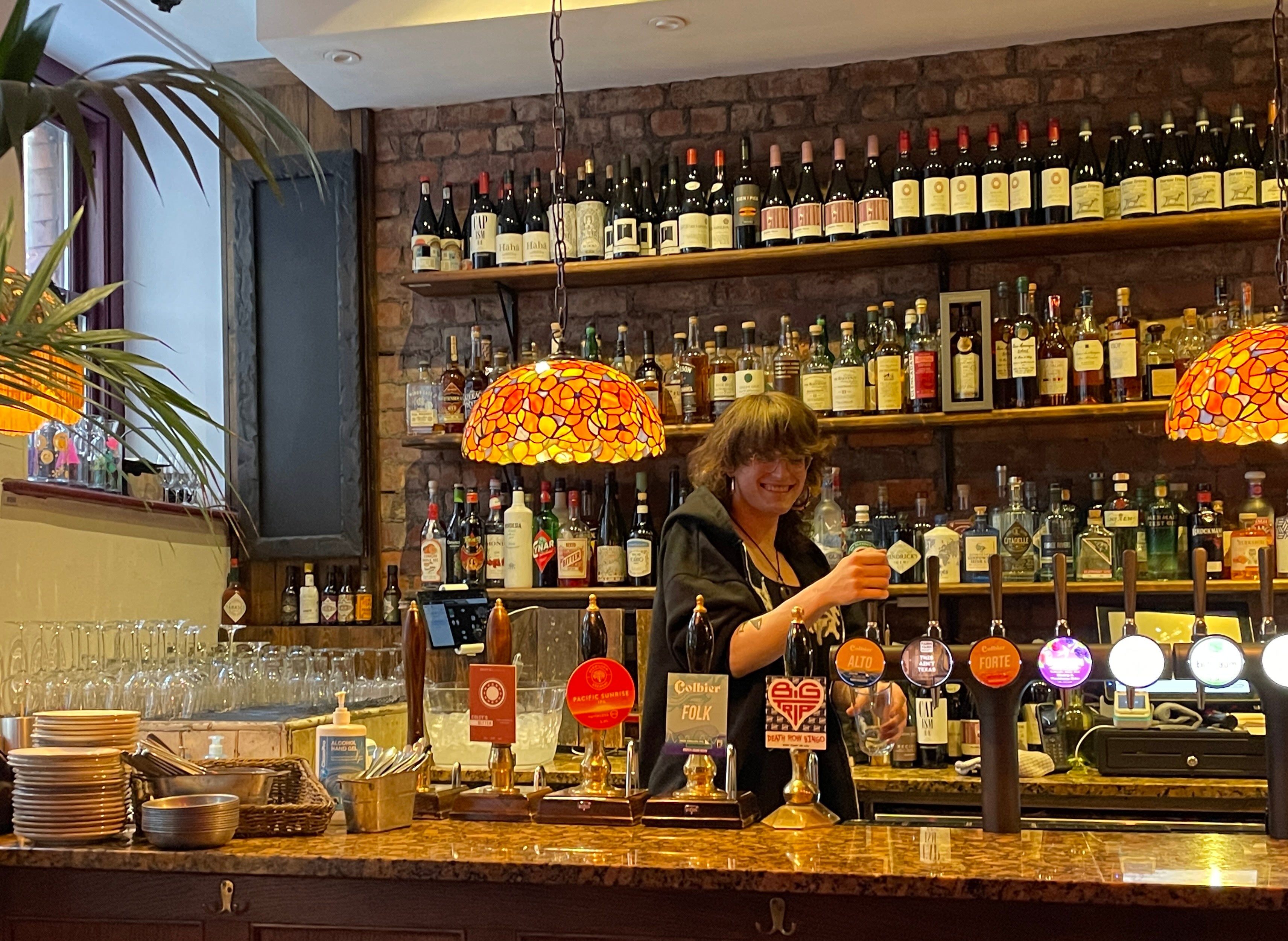“It’s always been queer up north.” This is the introduction to Manchester I am given by playwright, actor, and self-proclaimed “accidental historian” Chris Hoyle, the voice of Manchester’s LGBT+ Walking Tour.
As we sit down next to Alan Turing in the Sackville Gardens, learn about lesbian suffragettes, and discover the story of 19th-century trans trailblazer Henry Stokes (who literally helped build the city), it’s hard to disagree. In true Mancunion fashion, it seems its LGBT+ residents would settle for nothing less than changing the world.
The city has worn hundreds of hats over the centuries, from pioneers of industry to music mammoths. A metropolis whose “queens in fancy dress” ruled the place long before Queen Victoria, Manchester is constantly shapeshifting, but its queer heritage is embedded in its foundations, both figuratively and literally.
.jpg)
Read more: The best hotels in Manchester
Ambling past the rainbow-clad Canal Street and through the city’s Gay Village, you’re likely to step on one of 18 rainbow pavement mosaics forming the Heritage Trail. Each marks a place of significance for the local LGBT+ community, from the first book store to sell queer literature to a plaque paying tribute to a teen whose suicide in the 1980s led to the creation of the first British charity tackling LGBT+ homelessness.
The trail is now approaching its 30th year and, in true gay style, it’s feeling a makeover. The ‘Everyone Welcome Map’ built by guide Chris Hoyle is part of that renewal, featuring 16 must-see places in your explorations of the city.
The stops include well-known places such as Manchester’s first openly queer bar Manto, and world-renowned music and nightclub The Hacienda, but they also uncover lesser-known and untold queer stories.
Long before I moved to the UK a decade ago, I pictured Manchester as a queer haven – a place of pints, parties, and unbreakable friendships. Witnessing the devil-may-care attitude of characters in Russell T. Davies’ iconic Queer As Folk (2000) made me feel like I, too, could chat the night away in strobe-lighted Babylon (Cruz 101 Club in real life), surrounded by people clubbing, cruising and courting. More importantly, it made me believe that confidence and safety in being out would still be there the next morning.

It seems I’m not alone. Many people flock from across the UK to find community here. The reason why it’s become a thriving queer hub is that “Manchester has put in the work”, according to Liam Swanston, manager of the The Proud Trust charity.
Born in the 1970s as The Gay Center, the charity supports LGBT+ youth in all aspects of life, from work preparation and life skills, to confidential support, and acting as a safe space to hang out. It is one of only five purpose-built LGBT+ spaces across Europe.
“The city has learned from its darkest moments, and worked hard to be at the forefront of change,” Swanston adds, referring to the suicide of young Albert Kennedy, to whom a stop has been dedicated on the Heritage Trail.
Hoyle says: “Queer people have built the foundations of the world’s first modern city, and the trail shows that. But the aim is to keep adding more stops and stories for it to reflect the diversity of queer lives that make up Manchester’s LGBT+ history.”
Instead of winding down, Manchester’s queer scene has grown steadily. Today, the city is home to the UK’s largest LGBT+ community outside London, and this year its week-long Pride appears to have enjoyed record attendance, going head to head with Brighton Pride, which is currently the largest outside the capital.
Read more: The ultimate LGBT+ travel guide to Chicago

International artists including Billy Porter and Nelly Furtado were part of the line-up, as well as a who’s who of acclaimed British drag performers. But it’s not just song and dance (and a brand-new, boisterous Mardi Gras event). The events that rotate around Manchester Pride are as diverse as they come.
In the third week of August, SCENE Festival celebrates LGBT+ film and TV, both ground-breakingly new and classic. From next year, you will be able to make the most of the parade week and SCENE at the same time, as the city transforms its week-long event into a month-long one, jam-packed with events from book launches and sober soirees, to music and film festivals.
Read more: Top spa breaks in Manchester
The fun continues outside of the clubs. The largest queer bookshop in Europe, Queer Lit, is the place to find untold stories, where representation and joyous existence go hand in hand. Think queer fantasy, trans sci-fi, polyamorous memoirs, and everything in between. Oh, and also heaps of rainbow merch.
Though it sadly hit pause this year, Love From was the first sober LGBT+ space to open in the city, proof there’s more to Q+ socialising in the city beyond the conventional.
“Where there is a lot of historic LGBT+ heritage, there’s also a commitment to do more for the future of the city,” Swanston adds. “And in that regard, we’re very lucky to have political leadership that’s pushing to do more, and take people on that journey of change.”

Manchester City Council’s creation of the UK’s first LGBT+ housing project, to be opened in 2027, is part of that vision.
On my way back to the train station, I make my last stop at Manchester Art Gallery, whose Pocket Garden is permanently adorned by the words of artist Derek Jarman. Writings about hope and love for one’s garden adorn the place, with plants and words plucked directly from one of Jarman’s memoirs published before he died due to AIDS complications.
Walking through the busy streets of the Northern Quarter, or simply people-watching by the Canal, sheltered under my rainbow umbrella, I can see Manchester’s arms have been open to LGBT+ folks for a long time. I can’t help sharing a touch of pride with Alan, Henry, and Anne, and all the other queer founders that flirted with this shapeshifting city, long before the clubs and the charities made it official.
Read more: Where to stay near Manchester airport
Where to eat and drink
The Gay Village remains an important cultural landmark, but today pockets of LGBT+ communities have sprouted all over the city, from Canal Street and Deansgate to the Northern Quarter.
A community favourite blending award-winning sips and tasty tapas, The Molly House is the place for the ultimate aperitif. Pub downstairs, lounge and lush terrace upstairs, the bar has many spaces to fit any mood you’re in. From real ales to delectable wines, the over 600 drinks on offer are craftfully chosen by the team, and served within an amazing welcoming atmosphere.
For a sizable portion of anything you may crave, head to the Northern Quarter – Manchester’s hip, young, sexy artery bursting with street art and small music venues.
You may recognise the neighborhood as the filming backdrop of It’s a Sin (2019), another Russel T. Davies classic. This is also where the best bites hide. Queer-owned Feel Good Club is one of them, a great place to enjoy all-day brunch or just a coffee and a nibble.
And should you want to add a drag element (with bingo, year-round-Christmas, and outer space all existing themes) to your brunch, you’re spoiled for choice, with fabulous drag events and brunches all across the city.

Where to stay
When you need a break from the grey skyline, seek refuge at the central Treehouse Hotel. Crawl into your cosy nest and watch the canal go in the Lookout Studio Suite (from £172 per night) or pick the Two Queens Lookout (from £195 per night) to stay in theme.
This newly-opened hotel is also a host of SCENE screenings, meaning you can roll out of bed and hug your mug all the way through a deliciously queer matinee without needing to set foot outside.
The hotel’s restaurant, Pip, furthers the establishment’s commitment to luxurious sustainability. Scraps of delicious Manchester-grown beets and onions are turned into sophisticated pickles, and odd mackerel cuts are cold-smoked to perfection. Guest or not, Pip is worthy of a dinner reservation.
Read more: The best boutique hotels in Manchester



0 Comments